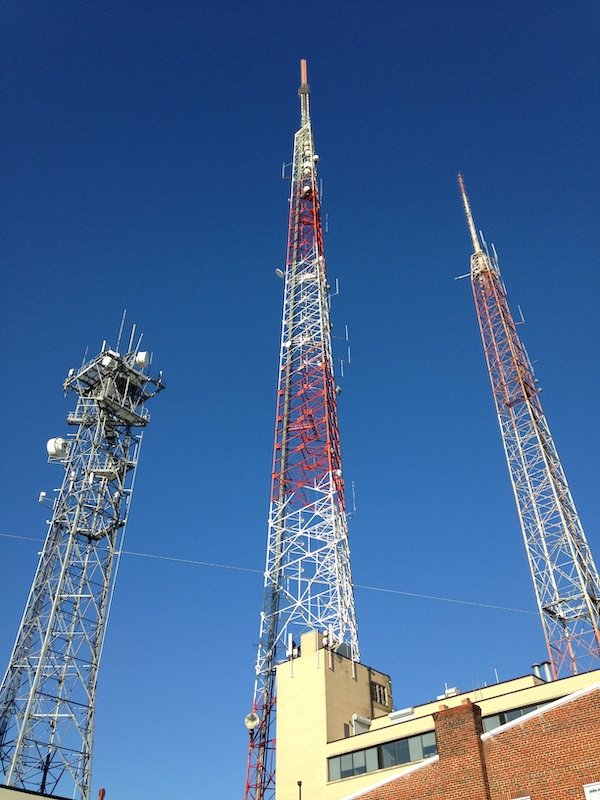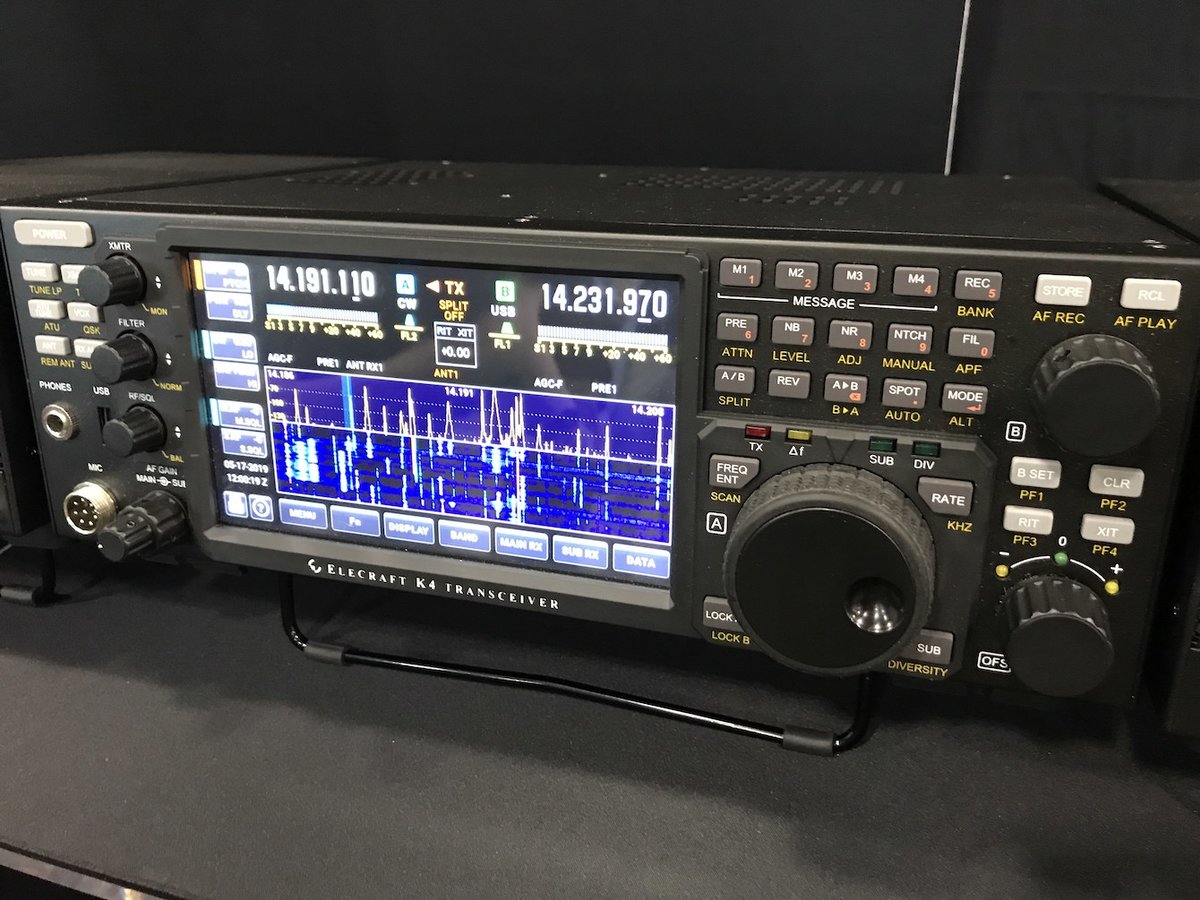Our Picks
Top content from across the community, hand-picked by us.

Radio Amateurs of Canada
HCStaff01 posted a link in Associations++,
Radio Amateurs of Canada (RAC) is the national association for Amateur Radio in Canada. It is a not-for-profit membership association with headquarters in Ottawa, Ontario, Canada, representing the interests of Amateur Radio all across Canada.
Speaking on behalf of Canadian Radio Amateurs, RAC provides liaison with government agencies and carries the Amateur voice about regulatory and spectrum issues to the discussion table with government and industry leaders, nationally and internationally. RAC is the Canadian voting member society of the International Amateur Radio Union (IARU).
-
- 0 replies

Neat lightning protection
K3MRI posted a topic in Base station,
- 5 replies

ICOM 7100 mobile use
WA2WMR posted a topic in Mobile & portable,
- 4 replies

VY1JA is QRT
K3MRI posted a topic in Yukon,
For all those who have had the opportunity of a QSO with Allen, he'll be missed. He is stepping down from amateur radio in Whitehorse, apparently due to health reasons. Meanwhile, the search is on for an active Yukon-based amateur radio station who can fill his shoes. It'll be tough, Allen has logged over 110,000 contacts.
- 0 replies
.png.146ad0096b6b16e026fc5f2efc800dc4.png)
Hurricane Dorian (2019)
K3MRI posted a topic in Emergency communications,
- 6 replies

Heathkit HW-101 Transceiver
K4RT posted a topic in Nostalgia and history,
- 5 replies

ICOM IC-705 on the horizon?
K3MRI posted a topic in Rumors,
Here is the first article I've read on the prototype: https://www.dxzone.com/icom-ic-705-new-product/
Thoughts?
- 2 replies

Boat Anchors or Military Gear
WA2WMR posted a topic in Ham topics in general,
Personally, I'd go for the shipboard radio room. My first experience with hf was listening to maritime radio on a Zenith TransOceanic at a friend's house.
-
-
- 10 replies

Ham Community at Hamcation 2020
HCStaff01 posted an event in Ham Community Calendar,
-
- 1 reply

Kenwood
HCStaff01 posted a link in Gear manufacturers,
JVCKENWOOD USA has a reputation for bringing important new products to the consumer electronics market. The company built the first audio/video amplifier for home theater back in 1981. JVCKENWOOD also created the first anti-theft car cassette deck that could be slid out of the dash; the first with an automatic broadcast sensor system and automatic noise reduction; the first with 24 presets; and the first polypropylene speaker cones. Over the years, JVCKENWOOD engineers have invented dozens of new technologies later copied by others.
JVCKENWOOD USA Communications Sector, based in Irving, TX, maintains a leadership position in North and South America for mobile and portable two-way radios and custom systems. Upon entering the U.S. radio equipment market in 1975, JVCKENWOOD quickly became known for its devotion to quality, which created immediate demand and credibility for the professional land mobile radio products introduced to American business and government buyers in 1983. KENWOOD land mobile portables, mobiles and custom systems are acknowledged to be a top choice in the world market, particularly by first responders, and are a trusted supplier to business and industry. In addition, JVCKENWOOD's dominance of the amateur radio market has been recognized in the U.S. for more than 30 years. KENWOOD amateur radio products are the number one choice for ham operators who are on the forefront of civilian emergency response.
Today JVCKENWOOD USA has taken a leading role in developing market-driven products and continues to operate as one of the largest manufacturers of personal entertainment and communications equipment in the world. It is a central JVCKENWOOD belief to listen to the market and develop exacting products that address customers' needs at the highest possible value.
Corporate name: JVCKenwood USA Corporation
To reach their amateur radio team by phone: (310) 639-4200 (Option 4, Option 1)
-
- 0 replies

Military service
K3MRI posted a topic in Non-ham topics in general,
- 3 replies

World Radio TV Handbook
K3MRI posted a link in Publications and information websites,
The WRTH Bargraph Frequency Guide has been carefully designed to give the maximum information in a clear and easy to read format. It is supplied as a pdf.
http://www.wrth.com/image/Sample-page-WRTH-BARGRAPH.pdf
Text columns show the frequency of the broadcasts in kHz; the names of the stations making the broadcasts or the broadcasters responsible for the broadcasts (you can tell international from domestic broadcasts at a glance, as stations making domestic broadcasts are shown in italic type); the transmitter site code for international broadcasts and the country code for domestic transmissions; and the power of the transmitter in kW.
Each entry also has a colour bar. These colour bars show the duration of each broadcast in UTC on the 24-hour clock. The colour of the
bar shows the language of the broadcast. Eighteen languages are identified by different coloured bars, with the colour and language shown at the bottom of the page. Other languages, or combinations
of languages, are shown above a buff-coloured bar. Information above the bar also gives the target area or country at which the broadcast is aimed; an indication of the days on which the broadcast is made; and symbols showing if the broadcast is inactive, irregular, of variable frequency, or used for DRM broadcasts.
You can use these pages to identify a broadcast you have heard on a specific frequency, or you can scan the colour bars to find broadcasts in your chosen language at a particular UTC time. You can also use the Find function in Adobe Acrobat to search the pdf for frequencies, stations, or sites.
The disk also includes a list of abbreviations used in the bargraph along with decode tables for international transmitter sites and countries or geographical areas. These are also supplied as pdfs. There is also a sortable list of transmitter sites in Excel format.
We are very pleased to be able to offer this very useful tool to industry professionals, DXers, SWLs and BCLs.
Please note - International broadcast SW frequencies change twice a year. The 'B' season comes into effect at the end of October each year and the 'A' season at the end of March. It typically takes 4-6 weeks after the start of the season for the broadcasters to settle on the final frequencies they will use, although changes do continue to be made. We monitor all the frequencies and changes before releasing our information.
-
- 0 replies

The TUK50 Protocol
K3MRI posted a topic in Self-promotion,
https://bit.ly/tuk50
The Teaser...
After 34 years of service, retired Lt. General El Masri is living comfortably in Washington D.C. His new life is a balanced mix of adventure motorcycling and amateur radio, until one day he receives a message on an HF frequency; it will change the course of his life and of the very world order he once defended. What causes this ex-Deputy Commander of the North American Aerospace Defense Command, NORAD, to steal a Top Secret archive from the U.S. Defense Intelligence Agency? Why is he trying to start a nuclear war with Russia? As worrisome, why are an elite group of Russian Navy Spetsnaz preparing an infil into North America? In this military, espionage, adventure novel, we discover the fragile nature of inter-agency intelligence and how a single event could trigger a nuclear Armageddon, still today. Fortunately, a pair of mismatched allies, Graham Lombard, a CSIS, has-been, intelligence analyst, and Masako Fujimori, an overdriven DIA field agent, will make it their duty to chase down the General over land, across oceans, in the air, and even on the airwaves. In the end, it will come down to a choice, will one of the General’s own family members be prepared to stop him, even if it means killing him?
- 3 replies

How to HAM while traveling?
KC3LUM posted a topic in Mobile operating,
I am curious to hear what the seasoned HAMs do when they travel. Does anyone commonly use technologies like D-Star, System Fusion, and WIRES?
Here is my experience:
To start, I have an 8 Watt Baofeng HT and a 50 Watt Yeasu Mobile. I read the manuals and know how to hand jam the freqs in, but this process reminds me of trying to set a VCR to record something a few days in the future.. a process that is doable but very few people take the time to figure out how to do it, and if you haven’t done it in a few months you are probably going to do it wrong a few times before you get it right. So I bought a programming cable and downloaded CHIRP. I pulled the freqs of bunch of repeaters in my area and dumped them into CHIRP and onto the radio. So now I have a HT with a bunch of local repeaters saved, but I have no idea where 99% of them are physically located. When I am out and about and feel courageous enough to broadcast, I have to pull up my RepeaterBook app, find the repeater call sign close to me, and then scroll through my HT’s memory bank to find the corresponding slot.
Does everyone do this? Because it feels very convoluted.
This process has left me really only tuning to the repeater closest to my house.
Now I am traveling on vacation and trying to make contact on the local repeaters, so I brought my HT. When I am able to broadcast I have to look up repeaters on RepeaterBook, hand jam them into the radio and kachunk the radio (with proper identification) to see if I put the info in correctly or if the repeater is even operational. I am of course not even saving these channels into the HT because it is a pain and I can’t even give them a proper name, so if I want to go back to try the freq again I might have to re-look it up and of course rejam it in the radio.
I do not have my mobile radio with me, but hand jamming info into it is just as annoying as the HT.
I want to know what the “Elmers” do because there must be a better way..
-
- 10 replies

Our first hamfest
K3MRI posted a blog entry in Official Community Blog,
Berryville will not be our last Hamfest. We will most certainly be presenting the Community at future hamfests both in our region and throughout the U.S. and Canada.
We hope to see many of our members, many of our friends, and to make new ones.
-
- 5 replies

Winlink on Raspberry Pi
K3MRI posted a topic in Digital modes,
https://hamradiohawaii.wordpress.com/2018/11/13/winlink-on-raspberry-pi-project/
- 3 replies

Sand and Signals ;-)
If you'd like to know more about BOTA... https://www.beachesontheair.com
- 4 replies

Dave Casler
HCStaff01 posted a link in YouTube Channels,
-
- 0 replies

Dusting off HAM
K3MRI posted a blog entry in Official Community Blog,
What is the proposed solution? I may be wrong, but it seems to me as though the large membership organizations in most countries are focussing on contesting. It seems as though contests are the best way, or so they think, to get on air. There is a second effort: digital. While some castigate FT-8 and the like, others say it brings younger operators into the fold.
The point is, I meet people regularly, usually because they see my call sign on some piece of apparel, who tell me that they are HAMs. They rattle off their callsign and then tell me that they've been inactive for x years. When I ask why, they actually don't have an answer. "I don't know, I've just not had time," is a common answer. I ask if it was money; not really they answer. Was it antenna restrictions? Some yes, most no. Was it just a lack of time? For some yes, for most no. So what is it? What is keeping people off the air and, more importantly, how do we get them back on?
-
- 3 replies

Elecraft K4 Brochure
HCStaff01 posted a file in Gear brochures,
Like you, we’ve witnessed the recent revolution in direct sampling and SDRs. But rather than rush toward change, we’ve been observing — saving the best ideas, testing them, and quietly merging them into a new kind of radio. The resulting modular, hybrid design is innovative and versatile, yet still a pleasure to use.
In particular, operators who’ve used our K3S transceiver and P3 panadapter will find the K4’s controls familiar, and its complement of I/O compatible with their existing station. But they’ll also discover a new level of convenience in the bright, 7” touch display, which combines a large panadapter with three intuitive multi-function controls. Everything you need is at your fingertips, including a unique built-in help system.
Three K4 Flavors
There are three K4 models to choose from: the basic K4; the K4D, which adds diversity receive capability; and the K4HD, which goes a step beyond other direct-sampling SDRs, adding a dual superhet module for the ultimate in blocking and close-in dynamic range.
A basic K4 can be easily upgraded to a K4D at any time by adding the KDIV4 option.
Similarly, a K4D can be upgraded to a K4HD by adding the KHDR4.
The K4 and K4D, like other “pure” direct-sampling radios, do not require crystal roofing filters. Digital signal processing is used to provide advanced demodulation, filtering, and signal display. The K4HD can operate either in direct-sampling or superhet mode. Typically the latter is only needed in the presence of extreme signals.
Modularity that Adapts to Your Needs
Flexibility — now and in the future — was a major design goal for the K4. All of Elecraft’s transceivers embody this philosophy. You can tailor the radio to your current needs, with one of the three models described above as well as other options. But you’ll also be ready to take advantage of new technology that in some cases hasn’t even been invented. Modules are segmented strategically to allow updates at a moderate cost so you won’t have to invest in a new radio every couple of years. Elecraft also listens to its community: the best ideas often translate into new options and software features.
Advanced Remote Control, Host Interfacing, and Display
With the K4, you can operate at the radio itself or from anywhere — whether it’s your living room, back porch, or halfway around the world. One K4 can control another, including streaming panadapter display. you can also use a tablet, netbook, or desktop PC. When operating the radio directly, you can use both the built-in LCD and an external monitor (HDMI), with different content.
Application programmers will benefit from the K4’s rich, yet easy to use command set, including many new commands for setting up panadapter and audio streams.
-
- 0 replies

Challenge yourself!
HCStaff01 posted a quiz in Just for fun,
-
- 1 reply
Welcome
K3MRI posted a blog entry in Official Community Blog,
There are other amateur radio websites out there, we know this, And yet, none seemed to have the most important defining characteristic: a sense of community. Some are about reviews, others about propagation, still others about technology. All those are important, and we support them, we even have links to them in our Links Directory! Instead, Ham Community was born out of a need to create off-air bonds. Let's be clear, first and foremost, HAMs build bonds on air. But why not use the web to strengthen those bonds, to facilitate them, even to nurture them?
As I type this, the project is in its infancy; it's not even live yet. As you, however, read this first post, who knows how far we've gotten. One thing is certain, we will get nowhere if we do not make this space useful to you, and that's what we've spent the past six months doing. We've been talking, thinking, and planning. We've been building and rebuilding, all in the hope of giving you a worthy tool and space.
As for the future, we have dreams. We think we know where this online community could end up, but let's not get ahead of ourselves.
Before I close, a quick shout out to several HAMs, and non-HAMs, who have been instrumental in making this site a reality. Their encouragements and input have been invaluable. I count them as friends and accomplices in this mad venture.
A most special thank you to W4DOI, W3JRD, K3HLT, and KW4TO; the Five Hamigos.
-
- 3 replies

Tenleytown front-end overload
K3MRI posted a topic in Washington D.C.,
- 1 reply

Elecraft K4
K3MRI posted a topic in Transceivers,
- 1 reply

FCC Part 97
K3MRI posted a file in Laws and Regulations,
-
- 0 replies
10 newly posted or edited posts
-
Christmas on the Rhine Boat Trip Started
-
Last Minute Items Started
-
Volunteer Update Emails Started
-
Flashlights left at MCM Check-In Started
Quick Menu
- Ham Community - Homepage
- Ham Boutique - Get your farkle
- Ham Census - Shape the future of Ham Radio
- Ham Weblinks - Curated links
- Ask the Elmers - Direct access
- Ham Quizzes - Keeping you sharp
- Ham Tutorials - Learn from the best
- Ham Speakers - Give a talk, find a speaker
- Ham Volunteers - Organize and volunteer
- Support - For site or boutique problems




